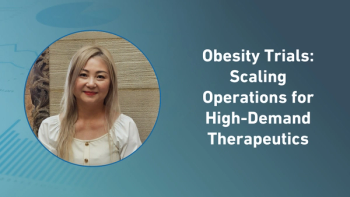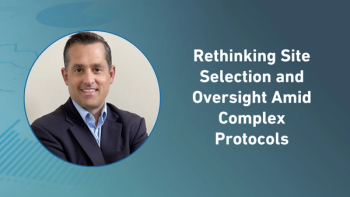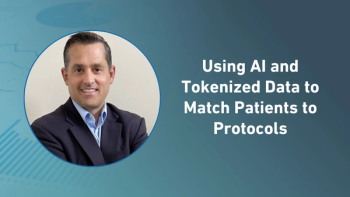
Applied Clinical Trials Supplements
- Supplements-09-01-2010
- Volume 0
- Issue 0
Innovative Early Phase Trial Design
Incorporating original study design accelerates better development decisions.
Due to advances in bioinformatics and pharmacogenetics, an abundance of molecules continue to move into early drug development. This is bringing greater complexity to studies, as well as the need to produce more robust study information. In order to achieve the go/no-go milestone with greater confidence, clinical development teams seek to conduct more rigorous early phase studies. Designed to demonstrate early signals of efficacy, Proof of Concept studies conducted in targeted patient populations are growing in interest. Assisting biopharmaceutical companies in making better and faster development decisions, these Proof of Concept studies clearly have benefits—helping to identify and select the most promising compounds earlier as well as decrease the failure rates in later stage trials.
Within the entire development continuum and life cycle of a biopharmaceutical product, the need to take a promising compound from the bench through development includes the crucial Proof of Concept stage. In a typical pathway, once an IND is approved, the exploratory product needs to enter into early phase studies, including first in man and Phase IIa studies, then migrate into multi-national phase IIb studies in patients. In order to maximize efficiency during the process, sponsors must begin with the end in mind—with an understanding of how to mange both the foreseeable and unforeseeable to mitigate risk throughout clinical development. By focusing on innovative study design; clinical development planning; and successful regulatory strategies, a sponsor can ensure the best path to approval is taken.
TOM GRILL/PHOTOGRAPHER'S CHOICE RF/GETTY IMAGES
At the early phase, unique operational models for Proof of Concept studies can assist in reducing time and cost in achieving milestones. These operational models should not only include proper evaluation of protocol design but also considerations around incorporating approaches such as Phase I hybrid models combining Phase I sites with traditional investigator sites. Central to accelerating time to milestone while reducing Phase III failure risks is the way that trials are designed in the early phase to facilitate an unequivocal go/no-go decision. These designs are becoming more and more innovative in order to produce earlier, more effective decisions about compounds.
Advantages of a combined protocol
In one case, for instance, a clinical study team worked to develop an innovative way to accelerate recruitment and regulatory submissions for an early phase development program. The design leveraged geographic time lines for regulatory submissions, while incorporating a combined protocol design to accelerate study time lines. The Phase I and Proof of Concept studies were part of a multi-site, global program. The goal was to recruit a limited number of volunteers for the Phase I first in man and comparative bioavailability studies, and a limited number of patients for the Phase IIa Proof of Concept study portion of the program.
The initial protocol was designed to combine first in man single doses and a multiple ascending dose study into a single, combined protocol. The protocol was submitted for regulatory and ethical approvals in the United Kingdom to facilitate rapid start-up of the trial. During the multiple ascending dose trial, a second protocol was submitted using the data from the single dose groups to select the dose for a food effect study, which was approved and able to start in parallel with the later groups of the multiple ascending dose part of the study. At the same time, the Proof of Concept protocol was submitted for regulatory approval in South Africa for the study. This part of the program conducted in South Africa was able to benefit from rapid patient recruitment strategies and multi-site patient recruitment approaches to complete the Proof of Concept study well ahead of schedule.
The entire early phase program required only three regulatory submissions. The target goals for recruitment were met, and the combined protocol approach contributed to exceeding targets for completing the study milestones. This innovative combined protocol enabled a decision about the compound to be made seven months earlier than is typical in the early phase. By conducting multi-site early phase studies, the program was completed 30% faster than typical studies. A typical early development program lasts 24 months from first in man to Proof of Concept, and in this case the study was completed in 17 months through a Phase I first in man and multiple dose combined protocol, a Phase I comparative bioavailability food effect study, and a Phase IIa Proof of Concept study in patients.
Applying strategic recruitment approaches
In order to make better, faster decisions about their compounds, biopharmaceutical companies need to be able to apply more innovative and strategic recruitment approaches in first in man and Proof of Concept studies. To accelerate recruitment and more rapidly achieve milestone targets in the early phase, multi-site studies can be conducted in various locations worldwide. There should be a focus on rapid study start-up through the application of geographic strategies that will provide access to diverse patient populations and healthy volunteers.
Early phase recruitment challenges today are combined with many emerging trends, such as personalized medicine. This was apparent in an early phase study that required genotyping of more than 10,000 potential participants to target a specific, well-defined study population of poor metabolizers of Cytochrome P450 2D6 (CYP2D6), an important enzyme involved in the metabolism of drugs. The pharmacogenetics-based study focused on evaluating a possible drug effect on cardiac repolarization to assess safety and tolerability of a neurological treatment, which has been demonstrated to show a 10-fold higher drug exposure in poor metabolizers of CYP2D6. The low prevalence of CYP2D6 poor metabolizers, complex inclusion criteria, and the long duration of the thorough QT/QTc study—with four periods each lasting 15 days—were identified as major challenges in the conduct of the study. However, the clinical conduct of the study was able to be completed in only nine months—from first to last volunteer visit.
More than 10,000 potential study participants were genotyped to identify nearly 400 CYP2D6 poor metabolizers. Of these individuals, nearly 300 were screened for eligibility to achieve the goal of enrolling more than 130 CYP2D6 poor metabolizers for the study. Rapid and innovative recruitment strategies for early phase development enabled management of the large pool for genotyping and contributed to accelerating development time lines and quickly achieving milestone targets.
This approach included a large team of recruitment specialists and call centers. Specialized recruitment campaigns were developed, which included community outreach projects, allowing recruitment of a vast pool of interested volunteers to invite for informed consent and subsequently test for eligibility. This study required close coordination between PK/PD Phase I specialists, internal cardiology specialists, and a dedicated cardiologist. A specialized trial design, state-of-the-art technologies, and in-depth scientific expertise were applied, and as a result, an accelerated and effective evaluation about the future of the study drug was generated.
Maximizing partnerships in the early phase
Overall, to bring safe and effective treatments to market more efficiently, it is critical that biopharmaceutical companies continue to make better and faster go/no-go decisions. The industry needs to apply innovative approaches, including in the areas of specialized trial design and recruitment strategies, to be able to return solid, reproducible outcomes, which bode well for success in later-phase trials.
The new era of the "learn/confirm" model is requiring robust strategic input from partners in early phase development. This input includes integrated clinical operations and regulatory insights to maximize the efficiency and effectiveness of what is learned about new compounds in development. More and more, biopharmaceutical companies are relying on their partners to bring greater levels of innovation to the design and execution of early phase studies. A partner should help obtain as much information as early as possible in the drug development process.
Partner teams will need to work more closely together to determine the appropriate use of biomarkers and adaptive trial designs. These study designs will need to be supported not only by biostatistical expertise, but also eClinical technologies, the use of medical imaging as a surrogate endpoint, and the increased use of biomarkers. In fact, biomarker analyses are anticipated to become increasingly important in clinical trials to understand the biological activity and safety profile of candidate therapies. Effective partnerships in the early phase will focus on selecting relevant biomarkers for development programs, interpreting results, and determining implications for therapies. Key goals include generating reproducible and reliable data that can be interpreted for pharmacokinetic or pharmacodynamic purposes, and ultimately making earlier assessments of new compounds in development.
Conclusion
With the need to obtain safety and efficacy data in patients sooner, early phase patient studies will continue to increase. Sponsors will look to partners to provide an enhanced level of dedicated support for Proof of Concept studies, combining regulatory strategies with drug development and clinical pharmacology aspects. Also, specific scientific and therapeutic expertise, to design and implement these studies, for new drug entities across an even broader range of indications will be seeked.
Increasing the number of patients per site and reducing the overall number of sites in a study serves to decrease variability—improving study quality and reproducibility. As a result, partners will need to provide integrated and harmonized research units to handle complex global studies involving healthy volunteers as well as patient populations. In order to accelerate patient recruitment in early development, sponsors will work more with partners to select optimal regulatory environments across the globe, access multiple and varied patient populations, and take advantage of seasonal benefits as well as rapid time line potential. "Super Site" networks in particular will grow in importance to provide sponsors with high enrollment potential for their clinical studies. These networks combine a broad, global array of investigator and academic sites. The approach draws on dedicated recruitment specialists and relationships with local, hospital-based physicians. Call centers and databases allow for a high number of patients to be recruited in a rapid time frame. Through these networks the number of sites as well as the time and cost involved can be significantly reduced.
Ultimately, to identify the strongest opportunities sooner and mitigate risk of phase III failures, sponsors will need to engage partner teams in early development that can couple scientific expertise with forward thinking regulatory and business planning. Overall, by incorporating more innovation into early phase trial design, sponsors will be able to accelerate better development decisions.
Michelle Middle, MB ChB, is Corporate Vice President and Worldwide Head, Early Phase, at Parexel International, 192 West Street, Waltham, MA 02451, email:
Articles in this issue
over 15 years ago
Discordance Between BICR Readersover 15 years ago
Documenting Adverse EventsNewsletter
Stay current in clinical research with Applied Clinical Trials, providing expert insights, regulatory updates, and practical strategies for successful clinical trial design and execution.




